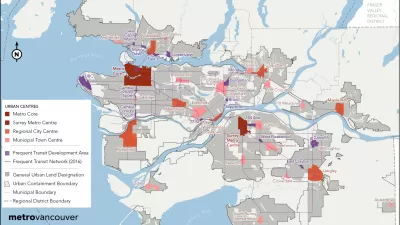A 20-year, voluntary, bottom-up, large-scale, long-term planning effort in Utah has managed to bridge the divide between Mormons and non-Mormons, environmentalists and mining interests, farmers and city-dwellers.

Collin Woodward, a contributing editor with Politico Magazine and author of five books, writes about the 20-year land use planning effort undertaken in the state of Utah. The effort was intended to conserve water use, promote clean air and avoid the destruction of open spaces by slashing housing lot sizes, encouraging higher-density development, and imposing new taxes to build a light rail network and commuter rail system from scratch.
Using a "voluntary, bottom-up, large-scale and long-term—has clicked with the people of a conservative state and bridged historic divisions between Mormons and non-Mormons, environmentalists and mining interests, farmers and city-dwellers. And it came out of an unlikely gathering 30 years ago. Some of the most influential figures in a staid and recession-shocked state came together at a dude ranch owned by the man who was the model for American fiction’s most famous bulldozer-destroying environmental activist."
Growth continues in Utah, writes Woodward: "[T]he challenge ahead is daunting. Last month, the Census Bureau revealed Utah was the fastest growing state in the country, and the majority of the growth is due to its people having the nation’s highest birth rate. Projections show Utah will nearly double its population to 5.4 million by 2050, further compounding the challenge of maintaining the quality of life its people treasure. So in 2013, current Governor Gary Herbert asked Envision Utah to do their magic again, only this time working statewide to determine what Utahns want the place to look like at mid-century."
FULL STORY: How Mormon Principles and Grassroots Ideals Saved Utah

Study: Maui’s Plan to Convert Vacation Rentals to Long-Term Housing Could Cause Nearly $1 Billion Economic Loss
The plan would reduce visitor accommodation by 25,% resulting in 1,900 jobs lost.

North Texas Transit Leaders Tout Benefits of TOD for Growing Region
At a summit focused on transit-oriented development, policymakers discussed how North Texas’ expanded light rail system can serve as a tool for economic growth.

Why Should We Subsidize Public Transportation?
Many public transit agencies face financial stress due to rising costs, declining fare revenue, and declining subsidies. Transit advocates must provide a strong business case for increasing public transit funding.

How to Make US Trains Faster
Changes to boarding platforms and a switch to electric trains could improve U.S. passenger rail service without the added cost of high-speed rail.

Columbia’s Revitalized ‘Loop’ Is a Hub for Local Entrepreneurs
A focus on small businesses is helping a commercial corridor in Columbia, Missouri thrive.

Invasive Insect Threatens Minnesota’s Ash Forests
The Emerald Ash Borer is a rapidly spreading invasive pest threatening Minnesota’s ash trees, and homeowners are encouraged to plant diverse replacement species, avoid moving ash firewood, and monitor for signs of infestation.
Urban Design for Planners 1: Software Tools
This six-course series explores essential urban design concepts using open source software and equips planners with the tools they need to participate fully in the urban design process.
Planning for Universal Design
Learn the tools for implementing Universal Design in planning regulations.
City of Santa Clarita
Ascent Environmental
Institute for Housing and Urban Development Studies (IHS)
City of Grandview
Harvard GSD Executive Education
Toledo-Lucas County Plan Commissions
Salt Lake City
NYU Wagner Graduate School of Public Service




























